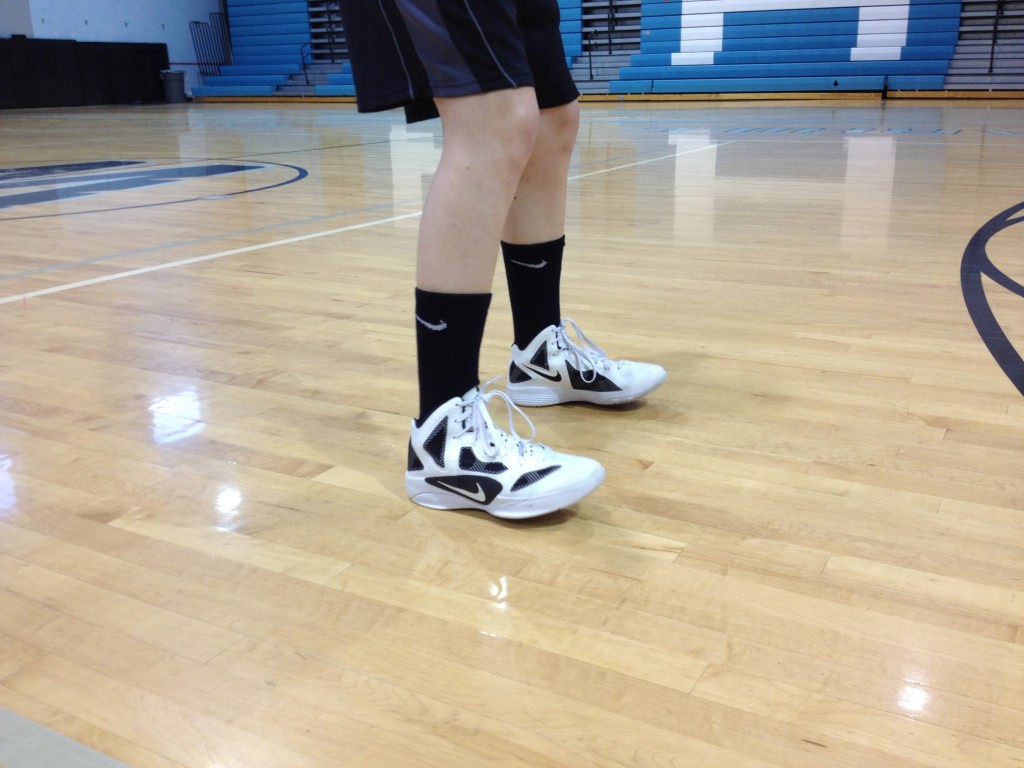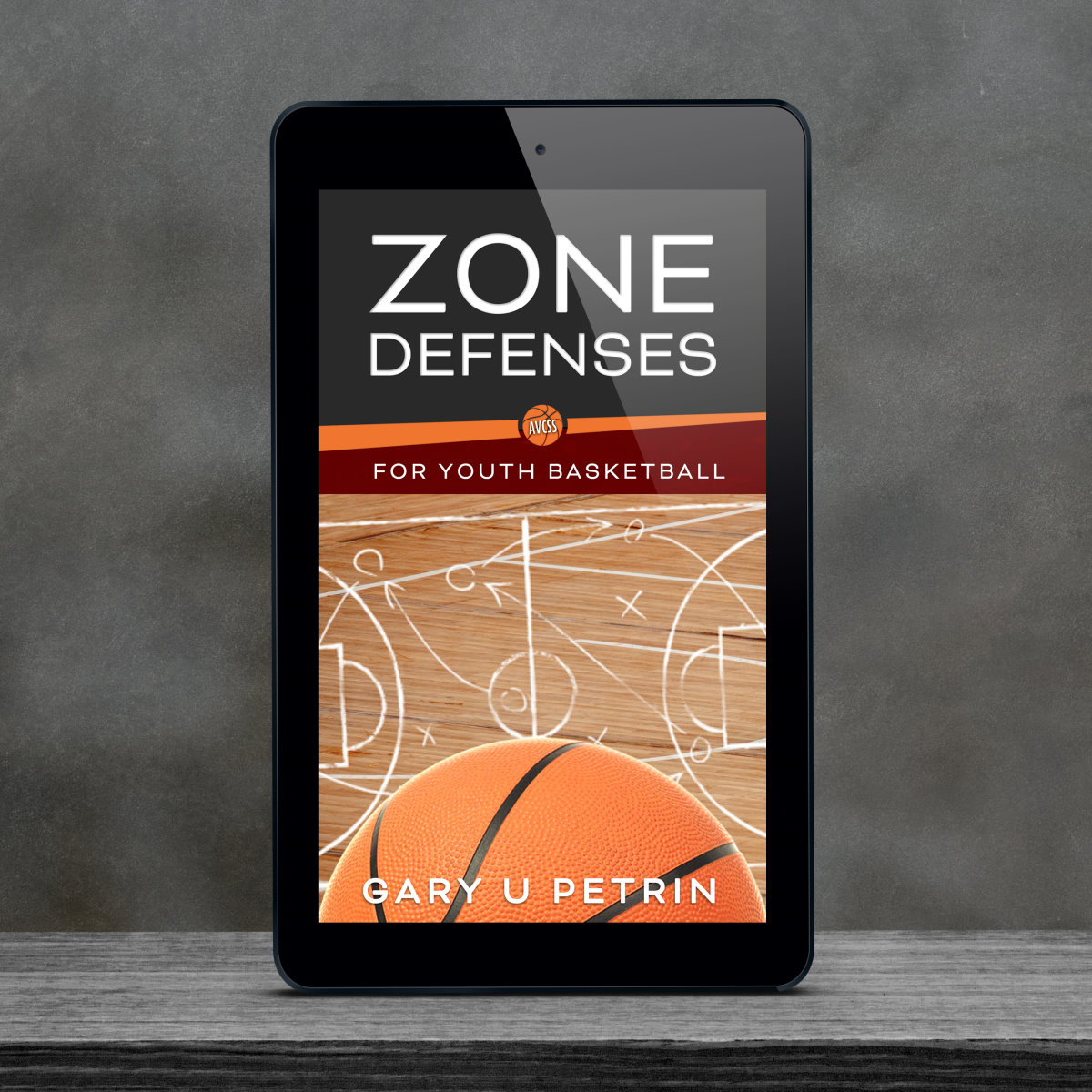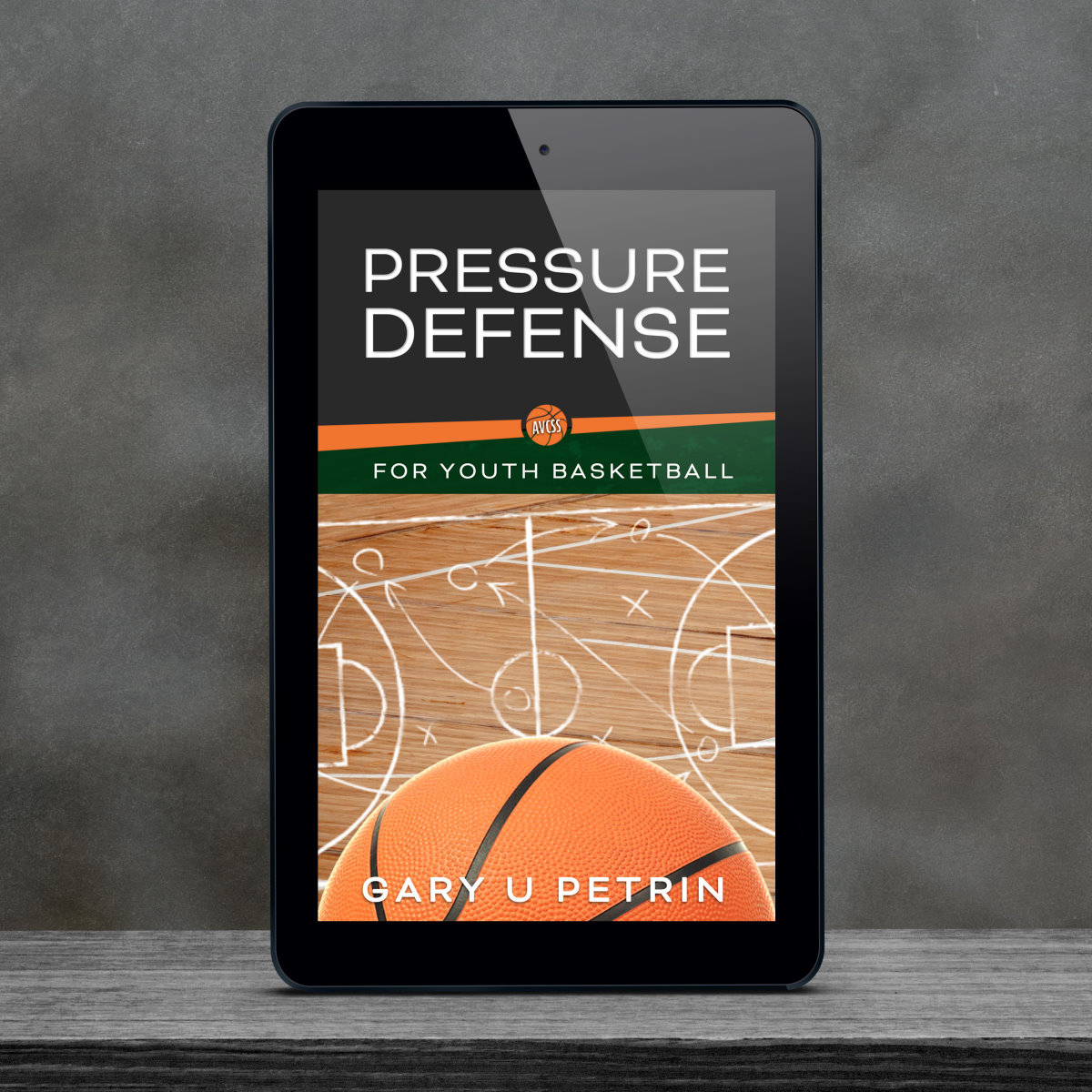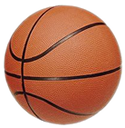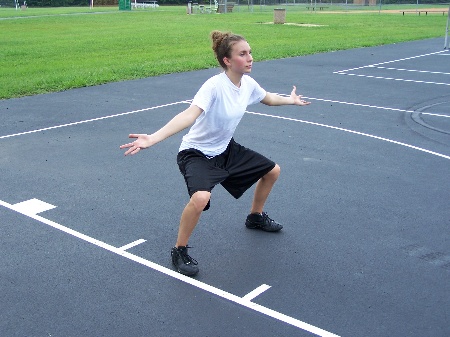
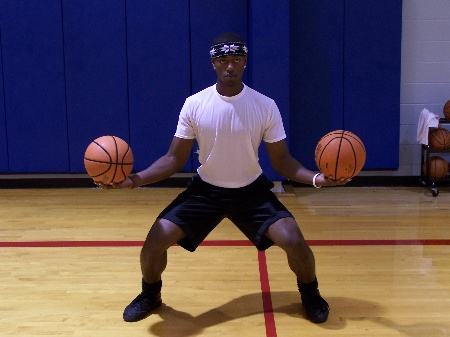
A great youth basketball defense is “attacking” (not reacting), hustles, is always very aggressive, and creates offensive opportunities from steals and turnovers.
Every player on your team should be able to play good defense – a player may be tall, or small, maybe they can’t shoot a 3-pointer, or jump really high, but there is no reason why they can’t always play good defense! When have you ever seen players practicing defense on their own? When players start warming up all they want to do is shoot. Rarely do you ever see a player practicing defense. Coaches must motivate their players to play good defense. Teach the basic fundamentals and the proper basketball defensive drills they will need to help the team be successful.
Let’s review the Youth Basketball Defensive Drills and Basics, the fundamentals and principles that all players should know, and some of the different Basketball Defensive Drills coaches should be including in their practices.
The Basic Defensive Stance Principles
Not all of your players will be good ball handlers or shooters, but there’s no reason why all players can’t learn a good defensive stance and use it!
a) Players feet should be shoulder width apart, keep knees bent, and in a “sitting” position.
b) Your knees should never be leaning past the end of your toes – this is bad for your knees, and indicates that you are leaning forward instead of in a sitting position.
c) Players head should be up, back should be straight. Players weight should be evenly distributed on the “balls of their feet,” never lean back on the heels.
Never lean back and play defense on the heels of your feet…
 Players weight should be evenly distributed on the “balls of their feet”
Players weight should be evenly distributed on the “balls of their feet”
d) Hand and Arms should be up and out with palms facing up.
e) Players should always stay low and level (younger players tend to “bounce up and down” when doing defensive drills).
f) There is also a bit of “attitude” and “aggressiveness” needed to play good solid defense. Keep this in mind when teaching the younger players (at certain ages, some players may have no idea what this means?).
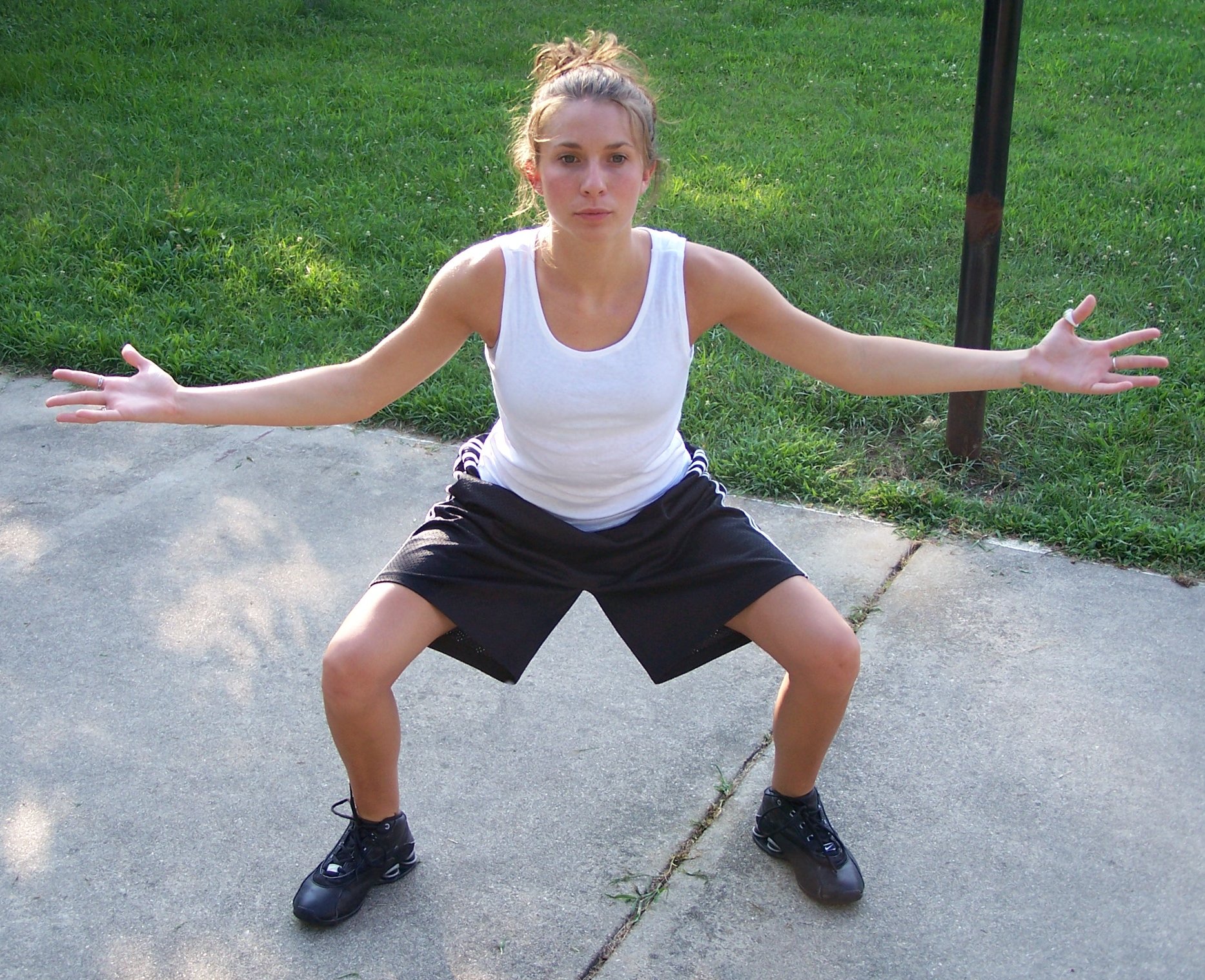
Feet shoulder width apart, knees flexed, sitting position, Palms up! Back straight, stay on the balls of the feet (never on the heels).
The Step Slide
The “Step Slide” is the most important of the “Basketball Defensive Drills” when learning to play good defense.
The step slide is just what its name implies (you step and slide). Players should stay low, level, and never step slide bobbing up and down. Start slow and ensure players do not “cross” their feet, its “step and slide” only! Players start in a good “defensive” stance, then “Step” outward with one foot, then “Slide” the opposite foot towards the other foot. Feet should never touch or cross.
Here is a very good “Team” Drill that ensures that the players will keep their arms up and out when doing the step slide drill…
Important Note: Remember, back straight, stay on the balls of the feet (never on the heels). When a defender is on their heels, the offensive player can usually drive past them very easily. When a player is on their heels – they are not ready to defend (players that are really tired usually play defense on their heels).
Hand Movement / Placement
Players need to understand that proper hand positioning is crucial when playing defense. The younger players tend to “reach” and “slap” at the ball, which in turn gets them in foul trouble (see below).
1. Players’ palms should be up when playing defense.
2. There is a strong tendency for the younger players to “reach” to get to the ball, this in turn causes them to “bump” into the player they are guarding.
3. Have players concentrate on “tipping” the ball instead of “slapping” at it.
4. Players should always try to “touch” the ball (not reach or lunge), and keep the offensive player busy (if the offensive player is focusing on the defender, they cannot focus on what they should be doing to run the offense properly).
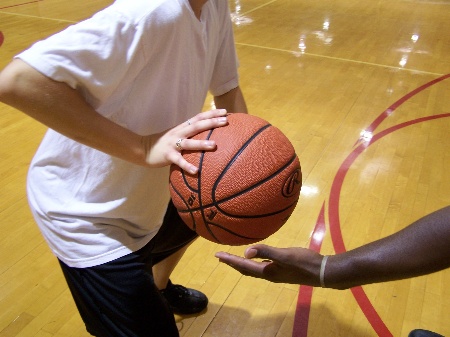
Correct: Palms are up, and the player is “touching” the ball (not the player’s hands).
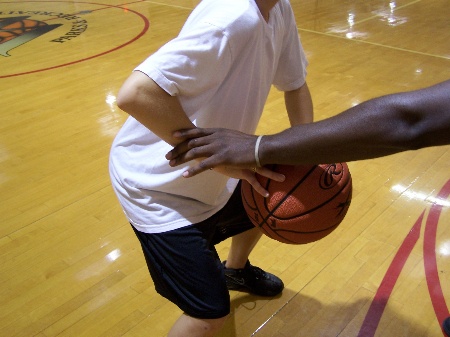
Wrong: Palms are down, and the player is “slapping” at the ball and the players hands.
What a Defender should be looking at:
One of the most underrated tips that all basketball players should be taught when playing defense is what they should be looking at when defending an offensive player with the basketball.
Eye Contact – When guarding a player with the basketball a defender should look directly at the offensive players waist. Why? If a defender stays focused on the ball, the offensive player can easily cross over or make a move (head fake, ball fake, dribble fake, etc), and leave the defender in the dust. The one constant is that while dribbling the ball, the players waist will always determine which direction the player is going. So if the ball is being dribbled on the right side it doesn’t mean the player is going right, it just means that they could be “baiting” the defender (and going left).
Body and Arm Movement / Placement
Here are some notes regarding body movement and body placement when playing good defense.
Body Movement – Mostly side to side (step slide), retreating, stay low (don’t get caught standing straight up), running backwards, and always move your feet. A defender should never “chase” or “follow” an offensive player around the court – this just shows inexperience on the players part (and possibly on the coaches part if they are not teaching the players the correct way to play defense).
Very Important – When teaching any type of defense, players must move every time the ball is passed, if they don’t the defense will break down. A good defender moves as soon as the ball leaves a passers hands, and attempts to get to their area of responsibility as the player is “catching” the ball.
Keep your feet on the ground – There is a time to jump and a time not to jump. One bad habit that players learn is going for fakes. Once a defender goes up for a good “shot” fake and leaves their feet, they are beat, there’s really no recovering from this. Teach your players that there is a time to jump, and demonstrate when they need to keep their feet on the ground.
Body Placement – Basically go by the “BALL / HEAD / BASKET” rule. This means that a player should always be between the ball (the person with the ball they are defending), and the basket. Very easy rule to understand, but very hard to get the players to do.
Here are a few tips on body movement / placement…
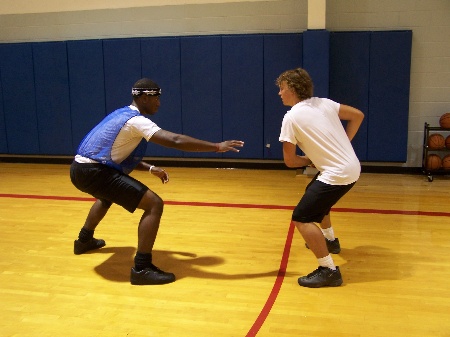
When the offensive player is getting ready to dribble, keep arms / hands low. Force player to use their weakest dribbling hand.
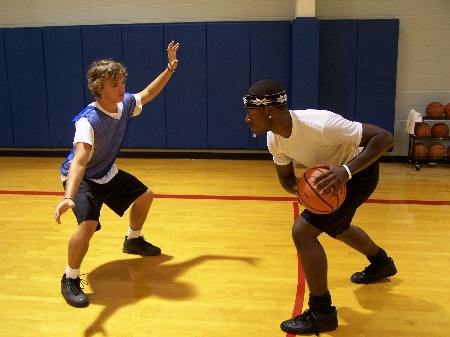
Important Coaching Tip: As a defender, you must understand who you are guarding! Is the offensive player a good shooter (then guard closely), is the offensive player a good driver (then guard loosely – which means stay off the player a few steps so you don’t get beat).
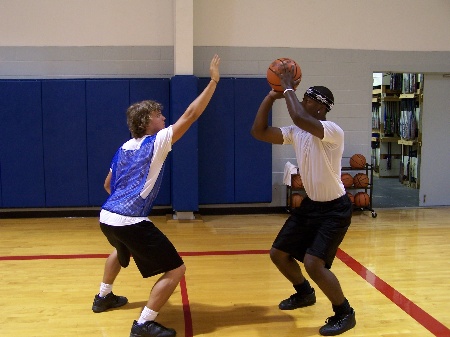
Teaching Point: When a defender is running at a player that has just received a pass, always run at them with one arm up high (to distract them, just in case they are getting ready to shoot the ball), but always be ready to retreat in case the player decides to drive. This is called “Closing Out” one of the seldom taught basketball defensive drills.
Arm Movement / Placement – Here are a couple of tips to teach your players regarding arm movement during a “Dead Ball.”
“Dead Ball” Tips 
When Ball is high, both hands are up on the ball.
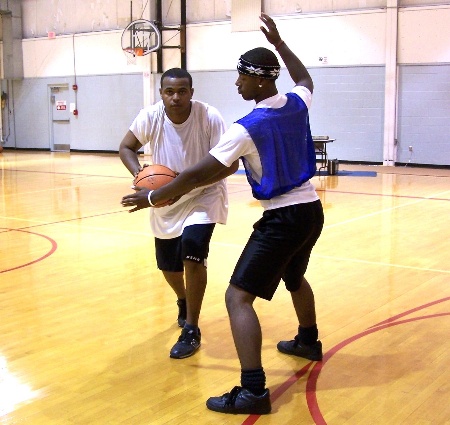
Ball to side, one arm up, the other hand on ball.

If Ball is to the side, one arm up, the other hand on ball.
Talking it up on Defense
A well disciplined team works on “talking it up” on defense. There is a certain language for defense, here are a few of the most common (and why they are used).
Ball, Ball, Ball – Is used when a defender is guarding an offensive player with the ball. Why? When the defense hears “Ball, Ball, Ball” they know where the ball is at all times.
Dead, Dead, Dead – Is used when a defender is guarding an offensive player with the ball, and the player picks up their dribble (once an offensive player picks up their dribble, this allows that defender to cover the player closer). Why? When the defense hears “Dead, Dead, Dead” they know that the ball is “dead” (cannot be dribbled), and this is the cue to now man up and play denial defense and not allow any other players to be open for a pass.
Shot – Is used by a defender when the player they are guarding “shoots” the ball. Why? When the defense hears the word “Shot” this is their cue to “box out” (teach your players that the word “shot” = “box out”).
Help – Is used when a defender is screened by an offensive player without the ball, and cannot continue to guard their player AND is also used if a defender gets beat off the dribble and needs assistance from other defenders. Why? When another defender hears “Help” they know that they must either “switch” who they are guarding (screens), or leave the player they are guarding to help defend (if an offensive player is driving to the basket, another defender must slide over to “help” so there won’t be an easy lay up, etc).
Switch – Is used when a defender sees another defender about to be “screened” and recognizes that that defender will no longer be able to guard the player. Why? A quick “switching” of defenders is a very important part of good team defense. Defenders should know that other defenders will help when needed.
Inbounds Plays “Yelling” (basic distraction) – When used at the right time, having a player on the offensive player that is ready to pass the ball in can be very distracting. Why? The inbounder has to focus on running the play, when they hear a defender yelling “Ball, Ball, Ball” (for example) it can take the focus off executing the play and onto why this defender is yelling like that.
Talking it up on defense is very important to any great defense. Players should be taught that this is just part of the game, and it is a necessary part of the game. It works, it makes a defense more intimidating, and creates an atmosphere of much needed discipline.
Taking the Charge!
One of the most underrated skills of a defensive player is “taking the charge.” A “charge” is when an offensive player runs into (or runs over) a defensive player that has established position on defense. The term “taking the charge” is meant for the defender – when they get in a position to take the charge. It is a hard skill to master, it takes a lot of mental toughness for a young player to put themselves in a position to get “run over” by an offensive player running full speed at them.
Teach your players the basics of “Taking a Charge” – Handout
Fouls:
As a general rule, defenders cannot “touch” the player that has the ball – period! If an offensive player with the ball is moving, and a defender makes contact – this is a foul. It may or may not be called by the referee’s each and every time, but the bottom line is that a defender is not allowed to make contact with an offensive player. So it’s very beneficial for coaches to teach players not to make contact, and make sure they also understand the rules regarding contact.
Referee’s call fouls that happen during a game. A foul can occur when a defender slaps, bumps, hits, or wraps their arms around the player with the ball. A player with the ball can also commit an “offensive foul” when they hit a defender with their forearm while dribbling, lower their shoulder and/or “run over” a defensive player when driving to the basket, (if it is severe enough?).
Players can limit the number of fouls they commit by moving their feet properly, and by not “reaching” in and hitting the player with the ball. Players are allowed 5 fouls per game. On their 5th foul the player will have to leave the game (the younger players usually start to cry at this time).
Types of Defenses
There are many types of defenses, and many variations of each…
Zone Defense: Players guard areas rather than the person with the ball (very easy to learn). Some of the most popular Zone defenses are the 2-3 (two – three), the 3-2, the 1-2-2, and the 2-1-2.
More Information on Zone Defenses
Man to Man Defense: Players guard other players “1 on 1,” and stay with that player while the other team has the ball (more difficult to learn and teach at the younger ages). Man to Man defense is also referred to as “team defense” and / or “help defense” (it just depends on the coach).
More Information on Man to Man Defense
Pressing: This is when the team plays full court (or half court) defense, trying to steal the ball anywhere and everywhere on the court (hard to learn, but the players love to press). There are two main types of presses – Zone and Denial.
More Information on Pressing / Pressure Defense
Junk Defenses:
Types of zone defenses designed to take away an opponent’s strengths / stronger players (best outside shooters, best ball handler, etc) in order to take away their opponents advantage or momentum. These types of defenses can give an offense a tough time because coaches hardly ever practice an offense vs. a junk defense!
Three popular junk defenses are the Box and 1, the Triangle and 2, and the Diamond and 1.
Example of a Box and 1 defense – 1 player would be the “chaser” (which is the player that guards the best player on the other team), and the other 4 defenders form a box type of zone defense.
Diamond and 1 Junk Defense – Handout
Match Up Zone Defense – Is a combination of playing zone defense and man to man defense (this is a type of defense that is very difficult to learn and is best taught to experienced players). This type of defense is used mainly at the College level, and some at the larger high schools…
Defensive Drills
Many coaches overlook the importance of adding basketball defensive drills to their practice schedule. Players aren’t going to walk in the gym and start practicing defense, or practice defense at home. So it’s very important that coaches add defense to their practice plan. In my opinion, defense should be the priority of every practice. There are many basketball defensive drills available to help develop your players defensive skills, here are just a handful…
Defensive Drills Video Clips – Menu Page
Final thoughts on defense…
Youth basketball players need to be taught the basic fundamentals and mechanics of proper defense. Make time to practice these basketball defensive drills in game like conditions. Check out one of the many free basketball defensive drills on the AVCSS basketball website – Step Slide Holding Basketballs. Coaches must make defense a big part of their practice plan. It will pay off with success! Possibly more wins, or even just make a team more competitive than your team was before. Defense takes a lot of hard work and dedication. Players must realize that defense is just as important as offense. A good defense can create scoring opportunities for your team through steals, turnovers, pass deflections, etc.
Want more information on Defenses? Try our publications…
Zone Defenses for Youth Basketball
Man to Man Defense for Youth Basketball
and…
Presses / Pressure Defense for Youth Basketball

